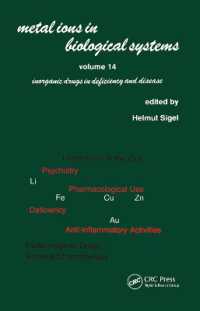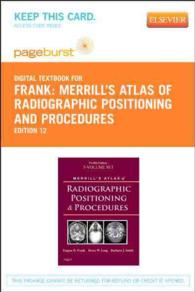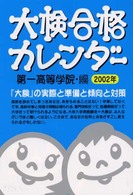Full Description
This book is concerned with comparing morphological paradigms between languages in order to establish areal and genealogical relationships. The languages in focus are the Transeurasian languages: Japanese, Korean, Tungusic, Mongolic, and Turkic languages. World-eminent experts in diachronic morphology and typology interact with specialists on Transeurasian languages, presenting innovative theoretical analyses and new empirical facts. The stress on the importance of paradigmatic morphology in historical linguistics contrasts sharply with the paucity of existing literature on the topic. This volume partially fills this gap, by shifting focus from Indo-European to other language families. "Paradigm change" will appeal to scholars and advanced students concerned with linguistic reconstruction, language contact, morphology and typology, and to anyone interested in the Transeurasian languages.
Contents
1. List of tables; 2. List of figures; 3. List of contributors; 4. Acknowledgements; 5. Chapter 1. When paradigms change (by Robbeets, Martine); 6. Part I. Paradigm change: Theoretical issues; 7. Chapter 2. On the strength of morphological paradigms: A historical account of radical pro-drop (by Bisang, Walter); 8. Chapter 3. Derivational paradigms in diachrony and comparison (by Nichols, Johanna); 9. Chapter 4. On arguing from diachrony for paradigms (by Joseph, Brian D.); 10. Chapter 5. Reconstructing the Niger-Congo Verb Extension Paradigm: What's Cognate, Copied or Renewed? (by Hyman, Larry M.); 11. Part II. The continuation of paradigms; 12. Chapter 6. Perceived formal and functional equivalence: The Hungarian ik-conjugation (by Csato, Eva Agnes); 13. Chapter 7. Comparative consequences of the tongue root harmony analysis for proto-Tungusic, proto-Mongolic, and proto-Korean (by Ko, Seongyeon); 14. Chapter 8. Old Japanese bigrade paradigms and Korean passives and causatives (by Unger, J. Marshall); 15. Chapter 9. The Japanese inflectional paradigm in a Transeurasian perspective (by Robbeets, Martine); 16. Part III. The innovation of paradigms; 17. Chapter 10. A Yakut copy of a Tungusic viewpoint aspect paradigm (by Johanson, Lars); 18. Chapter 11. Amdo Altaic directives and comparatives based on the verb 'to see' (by Nugteren, Hans); 19. Chapter 12. Innovations and archaisms in Siberian Turkic spatial case paradigms: A Transeurasian historical and areal perspective (by Nevskaya, Irina); 20. Chapter 13. Paradigm copying in Tungusic: The Lamunkhin dialect of Even and beyond (by Pakendorf, Brigitte); 21. Chapter 14. Ural-Altaic: The Polygenetic Origins of Nominal Morphology in the Transeurasian Zone (by Janhunen, Juha A.); 22. Language index; 23. Subject index








